Pakistan is battling the floodwaters of the monsoon this summer. And this in the middle of a political crisis.
A family wades through floodwaters with their essential belongings in Jamshoro, Pakistan.
Rainfall in Pakistan forced tens of thousands of people to flee over the weekend. The ongoing monsoon rains caused the Kabul River to swell in the Khyber Pakhtunkhwa province in the north of the country. The river tore down an important bridge, and many villages no longer had access to the road. 180,000 people are said to have fled the floods. Some slept on the highway with their livestock. According to official figures, 119 people died.
It is a temporary high point in Pakistan’s fight against the water masses: The annual rainfall this summer has led to a large number of floods in the country. Several provinces in the north and south of the country such as Sindh, Punjab and Balochistan are affected. According to the Pakistani civil protection agency, 1,033 people have died in the water masses since June. The regions around the major rivers, the Indus and the Kabul River, suffered particularly badly.
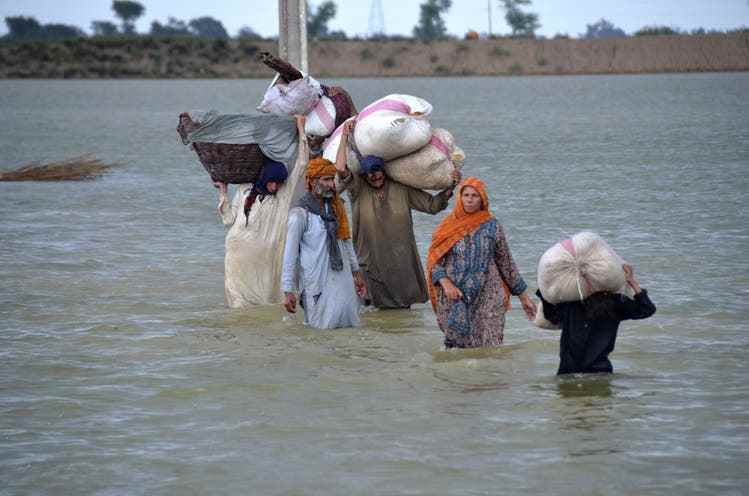
Citizens from Jaffarabad, a district in Pakistan’s southwestern Balochistan province. They are among the 50,000 victims of the flood disaster in Pakistan.
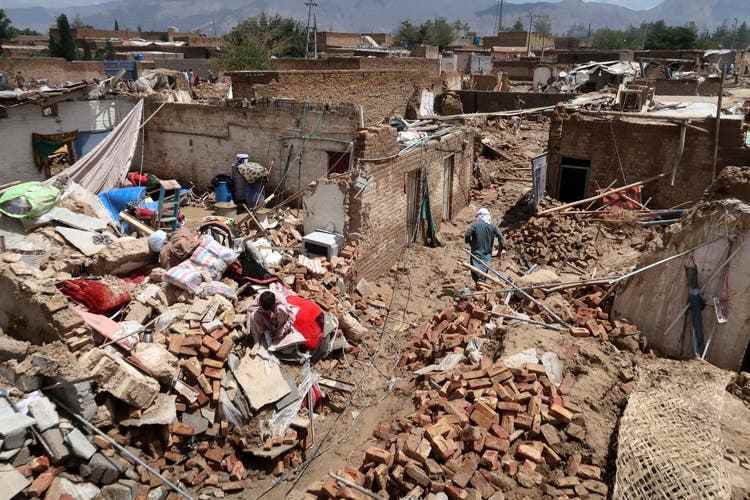
What remains? Flood victims survey their damaged homes on the outskirts of Quetta, in Balochistan province.
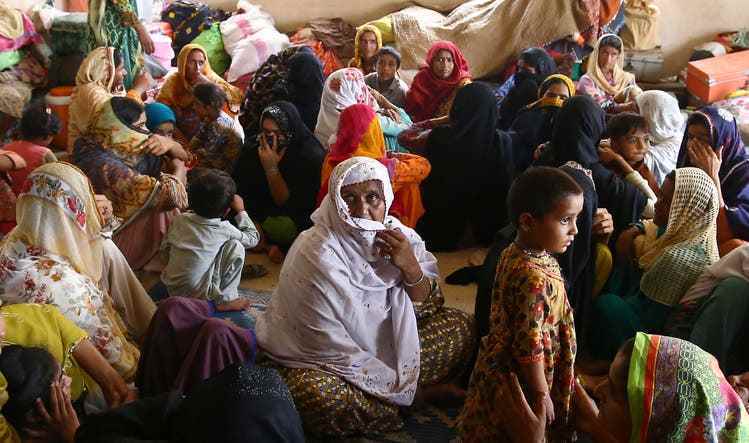
A government school building in Karachi offers shelter and drought to families who have been left homeless.
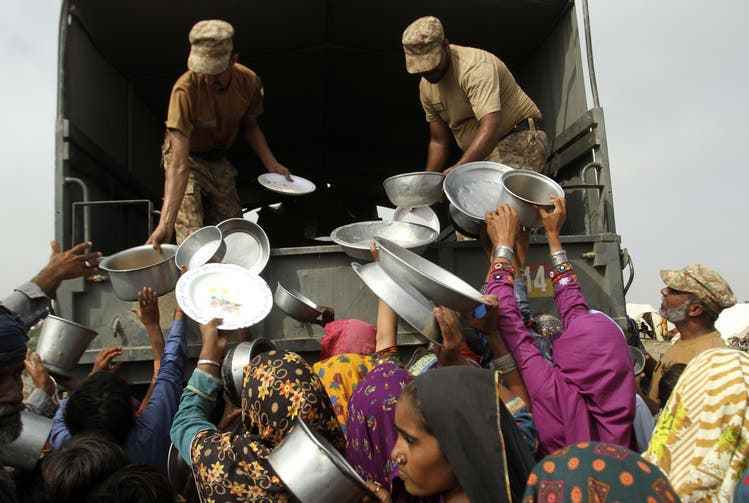
Army personnel distribute food and other relief supplies in Rajanpur, Pakistan’s Punjab district, Aug. 27, 2022.
33 million people affected
The Pakistani climate minister described the situation as a “climate-related humanitarian catastrophe of epic proportions”. The country appealed to the international community to send help. Turkey has already sent an aid team. The USA, Great Britain and the United Arab Emirates have also pledged financial support.
“The scale of the disaster is greater than expected,” Prime Minister Shehbaz Sharif said in a tweet after visiting the flooded areas. According to Sharif, 33 million people are affected by the floods, that is about 15 percent of the population. They had to flee or at least lost part of their property. The Pakistani military has also promised to provide assistance.
Visiting flood affected areas & meeting people. The magnitude of the calamity is greater than estimated. Times demanded that we come together as one nation in support of our people facing this calamity. Let us rise above our differences & stand by our people who need us today.
— Shehbaz Sharif (@CMShehbaz) August 27, 2022
The summer monsoon is both a curse and a blessing in South Asia. On the one hand, it brings much-needed rain, farmers in India and Pakistan wait for it every year and adjust their calendars to the rains. It influences the cultivation and the harvest for the whole year. On the other hand, the monsoon brings a wave of destruction every year: many houses are built too close to the rivers and they are not built to withstand the floods when they overflow their banks. In Pakistan this summer, up to six times more rain fell in certain regions than in previous years.
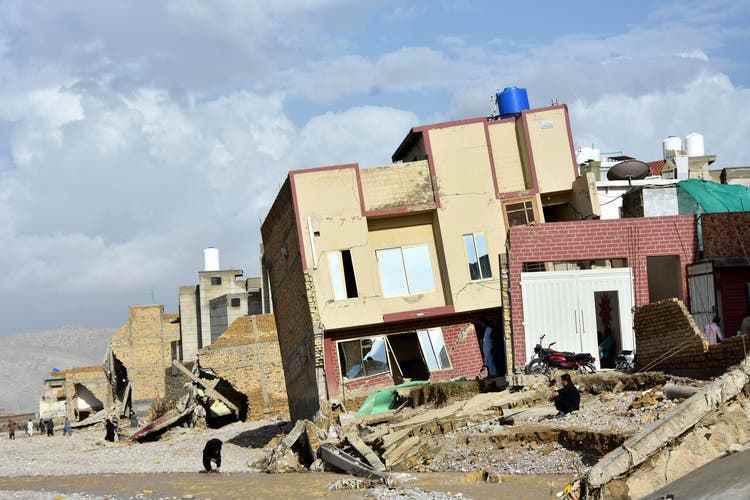
More than three million people have been affected by the floods, and more than 160,000 are living in emergency camps after their homes were destroyed.
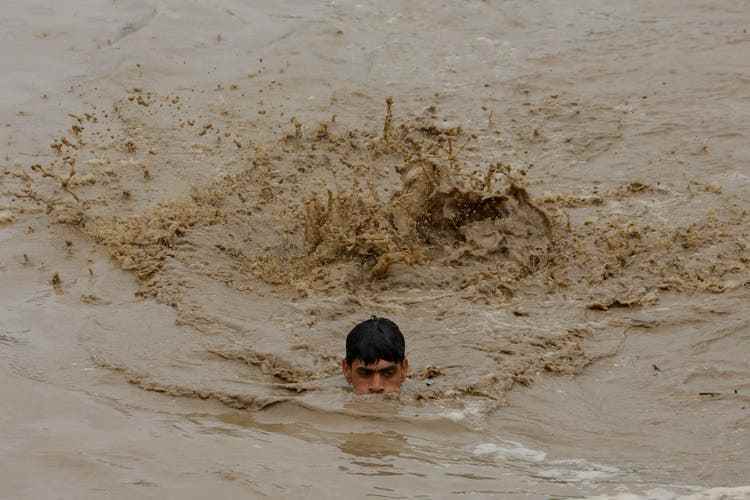
A man swims to safety in the Charsadda region.
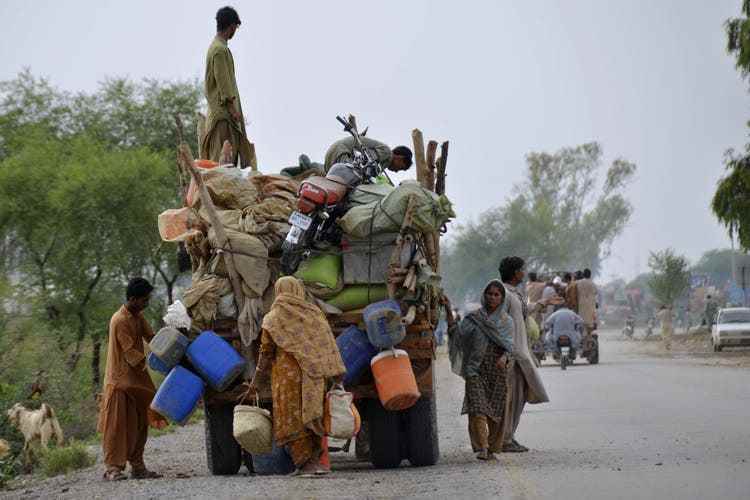
A woman loads her belongings onto a vehicle to go to a safe area after fleeing her flood-hit home in Nasirabad, a district in southwest Pakistan’s Balochistan province.
Afghanistan is also affected by the floods due to persistent rainfall. According to the Taliban government, the number of victims recently rose to 192. Thousands of animals were killed and 1.7 million fruit trees were destroyed. The Taliban are also appealing to the international community for help.
Both Pakistan and Afghanistan are in an economic crisis. The crop failures caused by the floods are likely to keep both countries busy for months to come. Afghanistan has been isolated economically and politically since the Islamist Taliban took power. Many Afghans already have too little to eat. Pakistan is struggling with high inflation and dwindling foreign exchange reserves – a payment from the International Monetary Fund should bring some relief recently.
Political crisis in Pakistan
Pakistan is also in a political crisis. Deposed Prime Minister Imran Khan is trying to destabilize the interim government, he is an agitator with enormous support from the Pakistani people. Last week, Khan was reported on terrorism charges. The Pakistani police want to investigate the case. In the coming days, a decision should be made as to whether the politician will actually be arrested.
Khan, a shrewd salesman of himself, posted photos of himself wading through flooded regions on Twitter. He too has promised help for the flood victims and will hold an international conference call. It seems as if the flood victims are becoming a pawn in a political battle that has been raging in Pakistan for weeks.
